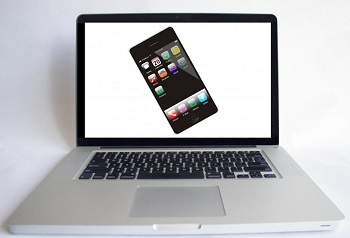A recent study has shown that despite the popularity of smartphones, they are still not the top internet access devices.
The results of a new Pew study have now been released and they looked into the mobile technology usage of 2,188 smartphone users, asking them about the way they depend on those devices for their internet access.
What they found was that the home broadband experience is still preferred to smartphone based internet.
The research indicated that the mobile technology device owners who are relying on those gadgets are more likely to be those who use them for vital services and job hunting. Moreover, those who use the devices as their primary internet connection are also those who have experienced financial hardship and who are more likely to have their smartphone service cut off.
This reveals quite a bit about the way that mobile technology is being used as a source of internet connection.
 According to a co-author of the study, Aaron Smith, explained that “That momentary inconvenience could be the difference between hearing back from a job and being able to apply for a job.” He went on to add that “This could affect their financial situation in a meaningful way.”
According to a co-author of the study, Aaron Smith, explained that “That momentary inconvenience could be the difference between hearing back from a job and being able to apply for a job.” He went on to add that “This could affect their financial situation in a meaningful way.”
This data shows that approximately 64 percent of adult Americans own smartphones, and among them, about 7 percent don’t have any other type of high speed internet access at home. The study referred to those users as “smartphone dependent”. They face limitations with regards to their internet usage options, aside from their smartphones, when it comes to going online. Some of their only alternative choices would be local community centers and libraries.
The report also indicated that among all owners of smartphones have an annual household income that is lower than $30,000, just about half of them had said that they had been forced to pause or even cancel their smartphone service as a result of money struggles. Moreover, 51 percent of them also said that they occasionally or even frequently max out their data plans.
The cessation of internet service over mobile technology could have been potentially devastating for households within the annual income level that was lower than $30,000 per year, as they were also those that were four times more likely to submit a job application over their smartphones than people who were doing better financially.
Educators in that region are supporting the use of these devices to help to enhance their instructions.
Teachers in the Asia-Pacific region are welcoming the use of mobile technology to an increasing degree in order to provide students in their classrooms with an enhanced learning experience and to improve the way that they receive their instructions.
The results of a recent study have shown that this trend in the use of mobile devices is a growing one.
The research was conducted by Adobe, for a study that they entitled “Transforming Education with Mobile and Digital Technology.” It involved the participation of over 1,000 educators throughout 13 different Asia-Pacific countries. Among them, 77 percent said that they had noticed a positive impact, overall, when it came to the strategic integration of mobile technology into their teaching process.
There were certain countries in which mobile technology was used to a greater degree than others.
 For example, in Southeast Asia, 85 percent of teachers said that mobile devices played a positive role in their classrooms. Equally, 85 percent of South Korean educators also said that these gadgets enhanced the learning experience. Slightly fewer educators in China – 80 percent – felt the same way about mobile tech devices in the classroom, but clearly that figure represents the vast majority of teachers.
For example, in Southeast Asia, 85 percent of teachers said that mobile devices played a positive role in their classrooms. Equally, 85 percent of South Korean educators also said that these gadgets enhanced the learning experience. Slightly fewer educators in China – 80 percent – felt the same way about mobile tech devices in the classroom, but clearly that figure represents the vast majority of teachers.
Among the respondents, 83 percent said that students were better able to understand concepts and could improve upon them by way of the access that they had to digital tools and apps over smartphones and tablets. Teachers also stated that they would use these devices in order to help them build their lesson plans. That was true among 98 percent of educators in Southeast Asia and 90 percent of teachers in Greater China.
Furthermore, among the teachers in Southeast Asia, 100 percent said that there was a strong need for schools to make sure that students were provided with the mobile technology facilities that they needed to learn, whereas 90 percent felt this way in Greater China, and in South Korea, 89 percent shared that belief. According to Adobe Asia-Pacific business manager for education, Wayne Weisse, “The ability to visualize or integrate interactive learning experiences in the classroom via a mobile device can make a huge difference in learning outcomes when engaging with today’s millennial generation.”
 According to a co-author of the study, Aaron Smith, explained that “That momentary inconvenience could be the difference between hearing back from a job and being able to apply for a job.” He went on to add that “This could affect their financial situation in a meaningful way.”
According to a co-author of the study, Aaron Smith, explained that “That momentary inconvenience could be the difference between hearing back from a job and being able to apply for a job.” He went on to add that “This could affect their financial situation in a meaningful way.”
 For example, in Southeast Asia, 85 percent of teachers said that
For example, in Southeast Asia, 85 percent of teachers said that 